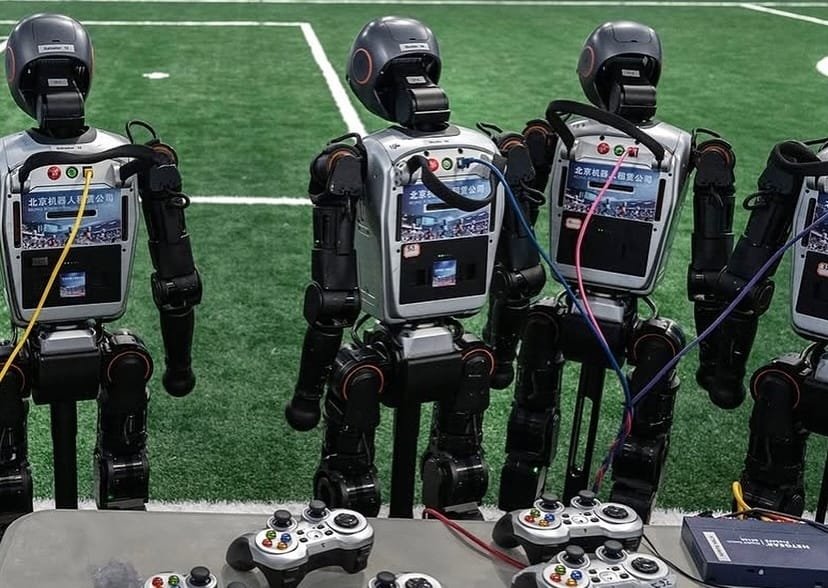
When you think of robots, the first images that come to mind are usually sleek machines performing precision tasks in factories or futuristic AI assistants handling complex computations. But in Beijing this past week, the world saw an entirely new side of robotics — one that was part groundbreaking innovation, part comedy show, and fully captivating.
The Chinese capital hosted the first-ever World Humanoid Robot Games, drawing more than 500 humanoid robots from 16 countries to compete in disciplines ranging from soccer and boxing to kung fu, sprinting, and even daily life challenges like medicine sorting and cleaning. The result? A spectacular blend of cutting-edge AI demonstrations and unforgettable bloopers, with robots stumbling across soccer fields like Sunday League players while also showcasing the impressive future of robotics technology.
A Global Stage for AI and Robotics
The games were designed to highlight just how far robotics has advanced — and to push the limits of what humanoid machines can do. Organized as part of China’s growing emphasis on becoming a world leader in AI and robotics innovation, the event placed humanoid robots front and center, testing them in both athletic and practical environments.
Unlike industrial robots that specialize in one repetitive task, humanoid robots are built to mimic human form and movement. Their value lies in versatility — the ability to adapt, learn, and interact in ways closer to real human function. This makes them ideal for roles in healthcare, education, service industries, and even emergency response.
By staging the competition as a global showcase, Beijing sent a clear message: the race for AI supremacy isn’t just about algorithms in the cloud, it’s about giving physical form to those algorithms — machines that can run, fight, clean, and even compete.
The Funniest Moments: Robots on the Pitch
While the event had plenty of technical highlights, what caught the internet’s attention were the robot soccer matches. Robots clumsily dribbled balls, tripped over their own feet, and tumbled like rookies in an amateur Sunday League.
Clips went viral online, with social media comparing the mechanical players to “Sunday League strikers after three pints” or “the future of football with VAR included at birth.” But behind the laughs lies an important point: robot balance, coordination, and decision-making under pressure are some of the hardest challenges in AI design.
If a robot can navigate a chaotic, fast-paced soccer game — dodging opponents, tracking the ball, recalibrating after a fall — it demonstrates the kind of flexibility that could translate into critical real-world applications.
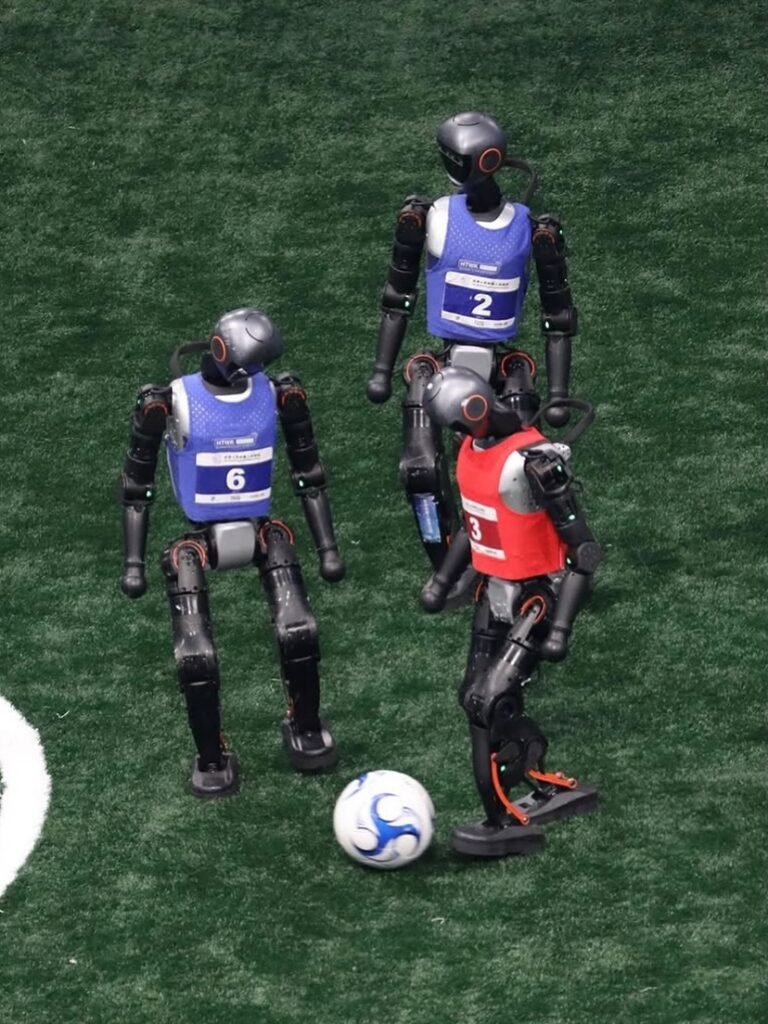
Beyond Sports: Robots in Action
The Games weren’t limited to laughs on the pitch. Other competitions demonstrated the serious side of humanoid robotics:
Boxing Matches: Robots sparred with calculated punches, showing off advancements in motion tracking and programmed defense strategies.
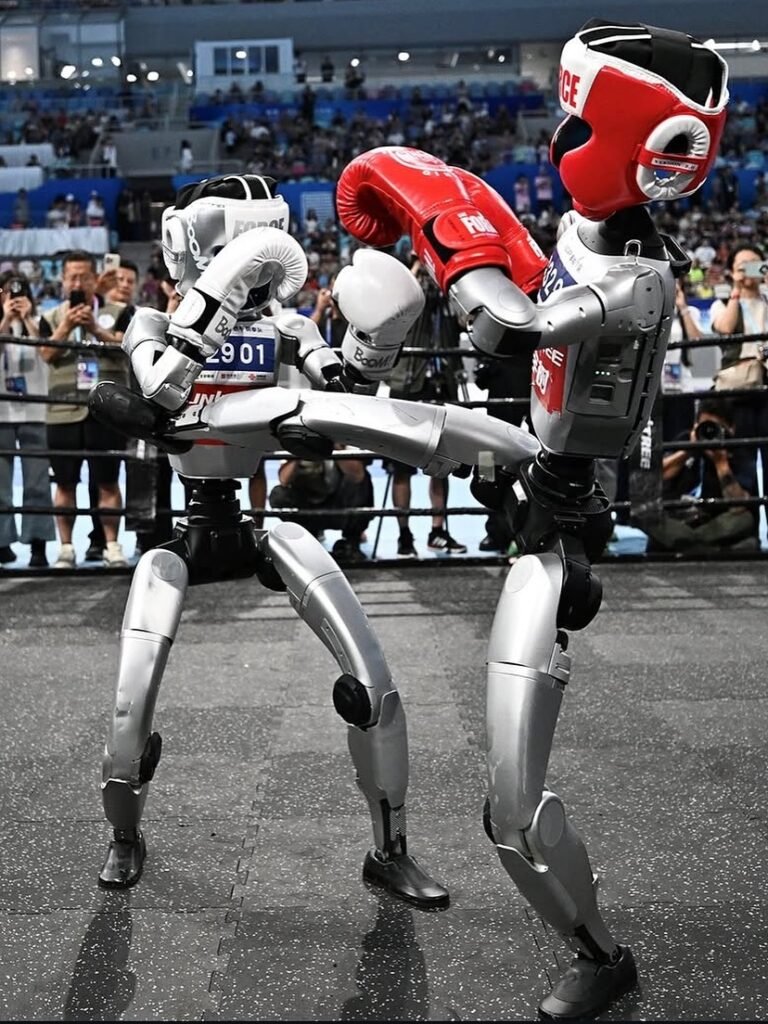
Kung Fu Routines: AI-powered performers mimicked martial arts stances, highlighting the blend of tradition and tech.
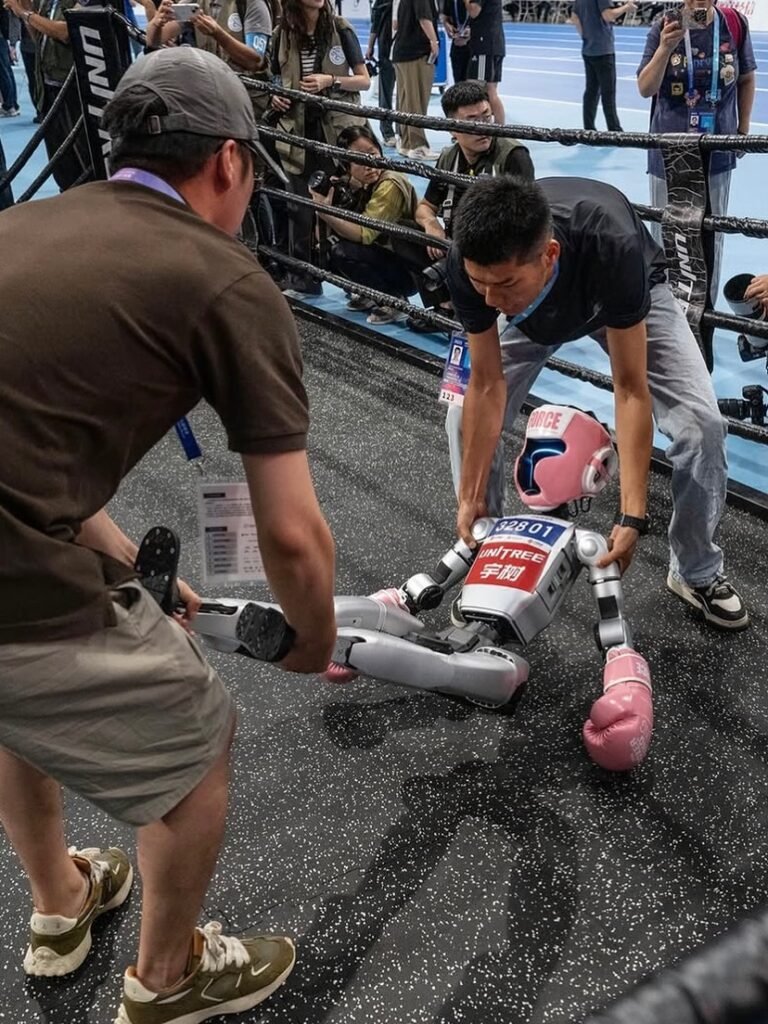
Track & Field: From sprints to obstacle runs, robots tested their speed and agility.
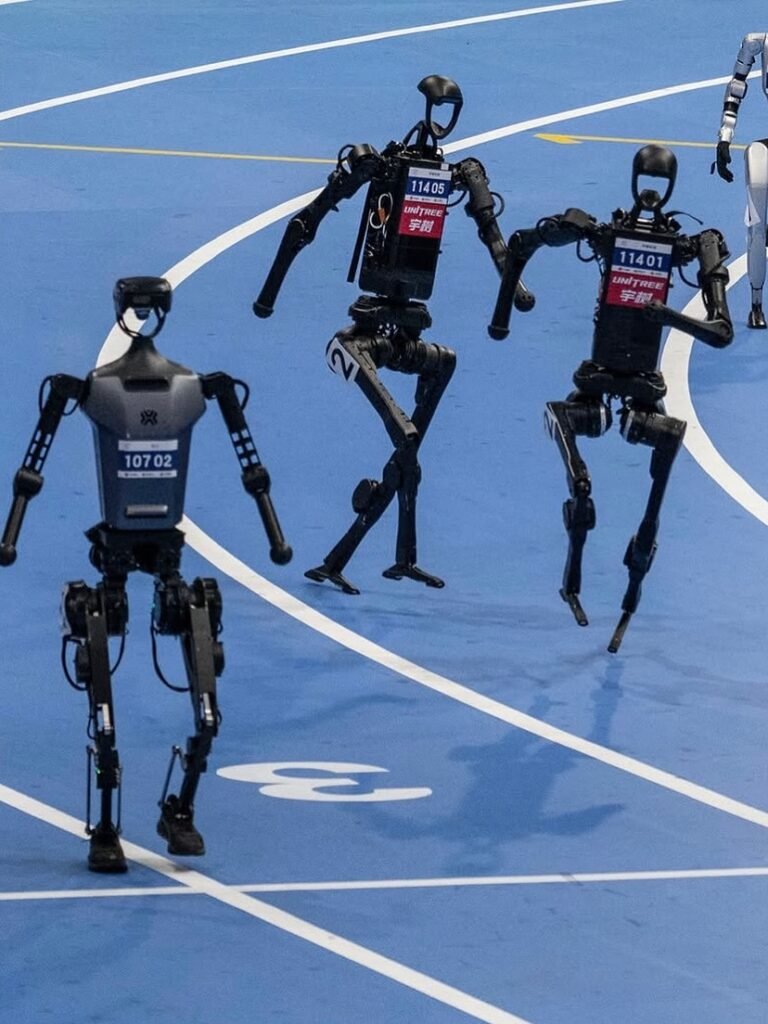
Medical & Service Tasks: Perhaps the most practical category, robots were challenged to sort medicine, assist with cleaning, and simulate tasks they might perform in hospitals or households.
These demonstrations underlined how humanoid robots are being designed for real-world integration, where precision and reliability are just as important as athletic novelty.
Why This Matters: The Bigger Picture
The Games weren’t just about entertainment; they were a reflection of China’s larger AI strategy. The country has invested billions into AI research, automation, and robotics manufacturing, aiming to set global standards in the coming decade.
Humanoid robots represent a new frontier: instead of being confined to assembly lines, they are envisioned as assistants in daily life, caregivers for the elderly, or teammates in dangerous rescue missions. By gathering global players in Beijing, the event also acted as a soft power move, positioning China as a leader in robotics innovation.
However, the Games also underscored the challenges ahead. While progress is undeniable, the frequent stumbles, errors, and awkward movements reminded everyone that human-level agility and adaptability are still a long way off. It’s a balancing act between hype and reality — one that shows both promise and humility.
Entertainment Meets Innovation
What makes the World Humanoid Robot Games truly unique is how they straddle the line between serious technological progress and mainstream entertainment.
On one hand, the event gave scientists, engineers, and companies a chance to showcase their breakthroughs. On the other hand, it captured public imagination by packaging robotics in a format that is instantly relatable: sports, competition, and spectacle.
It’s not hard to imagine a future where such games become recurring events, attracting not just tech insiders but global audiences the same way esports or the Olympics do today. Watching robots stumble, recover, and improve could very well become its own form of AI-driven entertainment industry.
Looking Ahead: The Rise of Humanoid Robots
With robotics giants like Boston Dynamics, Tesla’s Optimus project, and Chinese startups racing forward, humanoid robots are rapidly moving from prototypes to practical reality.
In healthcare, they could help in elderly care facilities, performing routine tasks or even offering companionship.
In disaster relief, they could navigate hazardous environments where sending humans would be too risky.
In education and service industries, they could act as assistants, guides, or even entertainers.
The Beijing Games were just the beginning — a symbolic milestone that showed the world both how far we’ve come and how much more there is to achieve.
Conclusion: A Laugh and a Lesson
The first World Humanoid Robot Games will be remembered for both jaw-dropping feats and hilarious slip-ups. Robots may have looked like clumsy Sunday League players, but the event was much bigger than the memes. It showcased a future where robots won’t just be tools, but teammates, helpers, and maybe even competitors in arenas we never imagined.
For now, the sight of robots tripping over soccer balls gives us a reason to laugh — but in the bigger picture, it’s a glimpse at a future that’s coming faster than we think.




